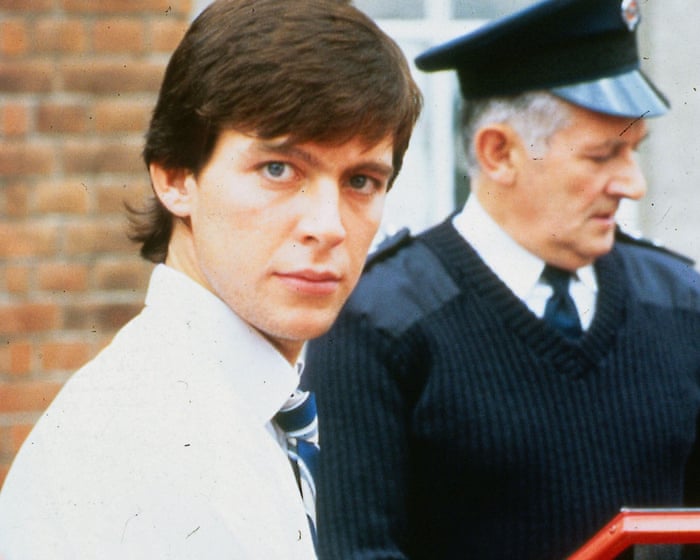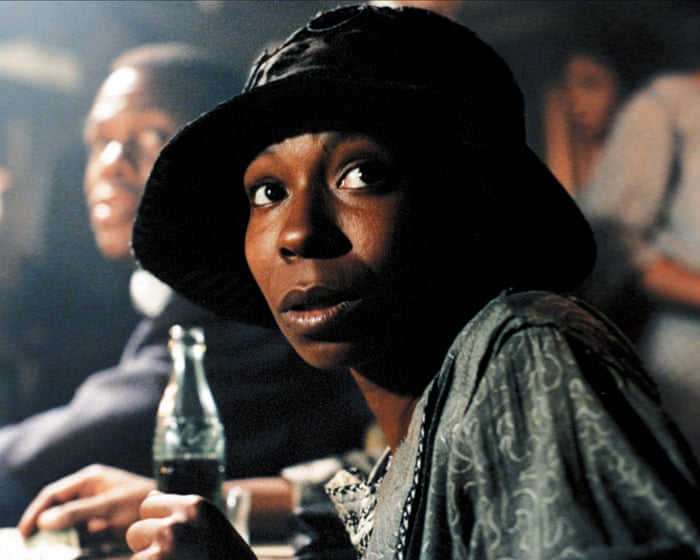For decades, Jeremy Bamber has received millions of pages of documents in his effort to prove his innocence in one of the 20th century’s most infamous crimes. Among them, PC Nick Milbank is scarcely mentioned. However, new evidence this week suggests the late police officer held a vital clue to what transpired on the night of the White House Farm massacre on August 7, 1985.
In 1986, Bamber, now 64, was found guilty of murdering his wealthy parents, Nevill and June, his sister Sheila Caffell, and her six-year-old twin sons, Daniel and Nicholas.
Initially, Essex Police treated the case as a murder-suicide. Caffell, the Bambers’ adopted daughter and a model known as Bambi, had recently been in a psychiatric hospital after a schizophrenia diagnosis. On the night of the murders, her parents reportedly told her that her sons should be fostered because she could no longer care for them—her greatest fear. Early news reports indicated she had killed her family and then herself.
Bamber’s relatives were skeptical. They informed police that Jeremy, also adopted, was acting oddly: he seemed cheerful, went on vacation, planned to buy a sports car, and began selling family heirlooms. Then, his ex-girlfriend Julie Mugford, whom he had just left, told police he had been plotting the murders for a year and had hired a local hitman. When the alleged hitman had a solid alibi, Mugford changed her story, claiming Bamber committed the murders himself. He was convicted by a 10-2 majority in October 1986.
The murder investigation had many inconsistencies and errors. In Britain, proving a conviction unsafe is enough to overturn it. Many journalists, including the Guardian’s former prisons correspondent Eric Allison and myself, have tried to demonstrate Bamber’s conviction is unsafe, but our findings were never sufficient.
Two years ago, New Yorker journalist Heidi Blake began investigating the case. Known for its thorough and well-resourced probes, the magazine published her outstanding work. Her initial article was rich with intriguing details, but her biggest breakthrough was locating Milbank, the officer who manned the lines at Essex Police HQ on the night of the massacre. Milbank’s name didn’t surface in the case until 2002, 17 years later, yet he may hold the key evidence to exonerate Bamber.
Among the millions of pages disclosed to Bamber was a reference to a 999 call from inside the farmhouse at 6:09 a.m. If verified, this would clear Bamber, as he was outside with 25 police officers at that time for over two hours.
His hopes were dashed in 2002 during a Metropolitan Police review of the case, Operation Stokenchurch, ahead of his appeal. Milbank’s name appeared for the first time, and he wrote a brief statement denying the 999 call, saying he only heard an open line with no voices until police entered around 7:30 a.m. Consequently, Bamber’s legal team didn’t pursue the call in his appeal. Although the appeal judges acknowledged crime scene contamination, they deemed it insufficient to overturn the verdict, and the appeal was rejected.
But one thing was missing from MiAlmost 40 years after the murders, Blake interviewed Milbank, who was still working as a civilian officer for Essex police. This made his account even more surprising. He confirmed that a 999 call had come in at 6:09 a.m. As Blake wrote in her New Yorker article published on July 29, 2024, Milbank recalled hearing what might have been muffled speech—perhaps a voice or a radio—and noises that could have been a door opening and closing or a chair moving. When Blake asked if this meant someone was alive in the house, Milbank replied, “Well, obviously.”
Blake questioned him about a 2002 statement, but Milbank insisted he had never made one and that she was the first person to ask him about that night since the 1980s.
The story grew even stranger. Before Blake’s article, Bamber was already hopeful that the Criminal Cases Review Commission (CCRC), which investigates potential wrongful convictions in England, Wales, and Northern Ireland, would refer his case back to the Court of Appeal. After the article, he felt even more confident. In April, he expected to hear from the CCRC regarding the first four points of his submission, including Milbank’s evidence. The commission had spent four years reviewing these arguments and agreed to provide an interim report due to the lengthy process. Bamber believed he had strong evidence for his release.
However, April and May passed without news. Finally, at the end of June, the CCRC sent Bamber a provisional statement rejecting his appeal. Most shockingly, they dismissed Milbank’s interview because The New Yorker refused to provide the audio recording, citing journalistic ethics and the risk of setting a dangerous precedent. Without the audio, the CCRC claimed there was no proof Milbank had made those statements.
The CCRC also revealed that Essex police had found an original handwritten statement from 2002, not in Milbank’s handwriting but seemingly signed by him. Additionally, they presented a new statement from Milbank dated September 10, 2024, in which he denied ever speaking to The New Yorker. Milbank said he didn’t recall making the 2002 statement but acknowledged he must have if it bore his signature, despite the handwriting not being his. This new statement contradicted everything he had told Blake. To add to the shock, Essex police later disclosed that Milbank had died of cancer after giving this statement.
Now, there’s another twist. This week, The New Yorker released Blake’s podcast series, “Blood Relatives,” about the Bamber case. In it, listeners can hear Milbank himself stating that he took a 999 call, which implied someone was alive in the house, and pointing out inconsistencies in the statement attributed to him for Operation Stokenchurch.
Earlier this year, the CCRC’s chair, Helen Pitcher, and chief executive, Karen Kneller, resigned following several high-profile failures. In 2023, Andrew Malkinson was exonerated after serving 17 years for a rape he didn’t commit, despite the CCRC twice refusing to refer his case. In May, Peter Sullivan had his murder conviction overturned after 38 years in prison, another case the CCRC had declined to refer.The case was not referred. When Dame Vera Baird became interim chair of the CCRC in June, she criticized the commission for acting in an “arrogant, dismissive way… almost looking for reasons not to send cases to the court of appeal.”
Philip Walker of the Jeremy Bamber Innocence Campaign claims the CCRC neglected its duty to safeguard a whistleblower. He argues that Nick Milbank deserved protection after revealing a possible cover-up by his employer, Essex police. Walker insists that Essex police should not have been permitted to question Milbank after he told the New Yorker he received a 6:09am 999 call from Whitehouse Farm and had never provided a statement about it to Operation Stokenchurch in 2002. This was problematic because Essex police was both his employer and the force that conducted the initial, contentious murder investigation.
Walker states, “The CCRC endangered him and undermined his evidence by letting the police handle him directly. This shows the CCRC failed in its duty of care to Mr. Milbank, who was reportedly very ill at the time and may have been pressured into making an untrue statement. It’s clear that the CCRC should have interviewed him, not Essex police.”
The Guardian presented Essex police with Bamber’s claims that the original 2002 statement was fabricated and that Milbank was pressured last year to contradict his New Yorker account. Essex police responded by emphasizing that Jeremy Bamber was convicted of murdering five people in 1985, including two children, and that all subsequent appeals and reviews have upheld his guilt.
From Wakefield Prison, Jeremy Bamber writes that they requested the CCRC assign an independent investigator to speak with Milbank about his New Yorker statements, but the CCRC refused, missing the chance to hear his testimony. Bamber asserts he now has a solid alibi and evidence that Essex police concealed Milbank’s evidence by falsifying a witness statement. He adds that Milbank’s recent death has worsened the failures of both the CCRC and Essex police, noting that his alibi would be unquestionable if not for Milbank’s final statement, and now Milbank cannot confirm the truth.
Bamber believes charges for perverting the course of justice should be pursued regarding the 2002 statement and insists the CCRC must refer his case to the court of appeal. The Metropolitan police, which led Operation Stokenchurch, declined to comment.
When The Guardian asked the CCRC about Bamber’s allegations, they replied that a provisional decision on part of his application has been sent to his lawyers and they are still reviewing other issues he raised.
Bamber also questions the whereabouts of the audio recording of the 999 call, suggesting it should exist and wondering where it might be now.
Frequently Asked Questions
Of course Here is a list of FAQs about the possibility of Jeremy Bamber having an alibi designed to be clear and conversational
Basic Questions
1 Who is Jeremy Bamber
Jeremy Bamber is a British man convicted of murdering five members of his family in 1985 He is serving a wholelife tariff meaning he will never be released
2 What is an alibi
An alibi is a claim or piece of evidence that proves a person was somewhere else when a crime was committed and therefore could not have done it
3 Does Jeremy Bamber have an alibi
At his original trial the prosecution argued he had no verifiable alibi However his defence team and supporters have since presented evidence they claim could serve as one which is the subject of ongoing appeals
4 Why is there talk about an alibi now so many years later
New evidence witness statements and documents have emerged over the years that were not presented at the original trial Bambers legal team argues this new information supports his claim of innocence and provides a potential alibi
Advanced Questions
5 What is the specific alibi being claimed
The core of the alibi claim is that Bamber was at his own home during the murders Supporters point to a phone log and witness testimony suggesting he was on the phone to his father around the time the killings began which would have made it impossible for him to be at the scene
6 What is the Rifle on the Wall theory
This is a key part of the defences argument They claim that Bambers sister Sheila who was also found dead was the murderer They suggest she shot the family and then herself and that the rifle was initially found propped against a wall which would be consistent with suicide not a murderer fleeing the scene
7 What is the main evidence against his alibi
The prosecutions case relied heavily on a phone call from Bambers father Nevill to Jeremy The prosecution argued Nevill said Sheila had gone berserk with the gun which implied the killings were already underway and that Jeremy was not there The jury believed this version of events
8 Have the courts officially accepted this new alibi
No not yet The Court of Appeal has reviewed the




